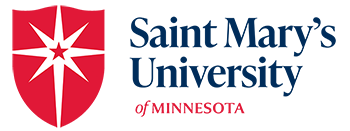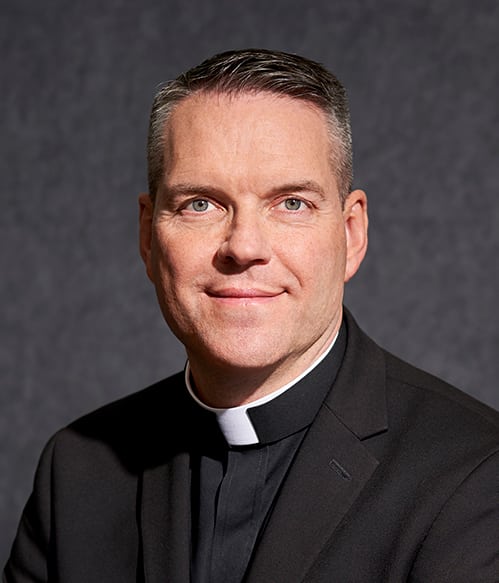Saint Mary's Newsroom
Campus ConnectionAn update from the president to alumni and parents
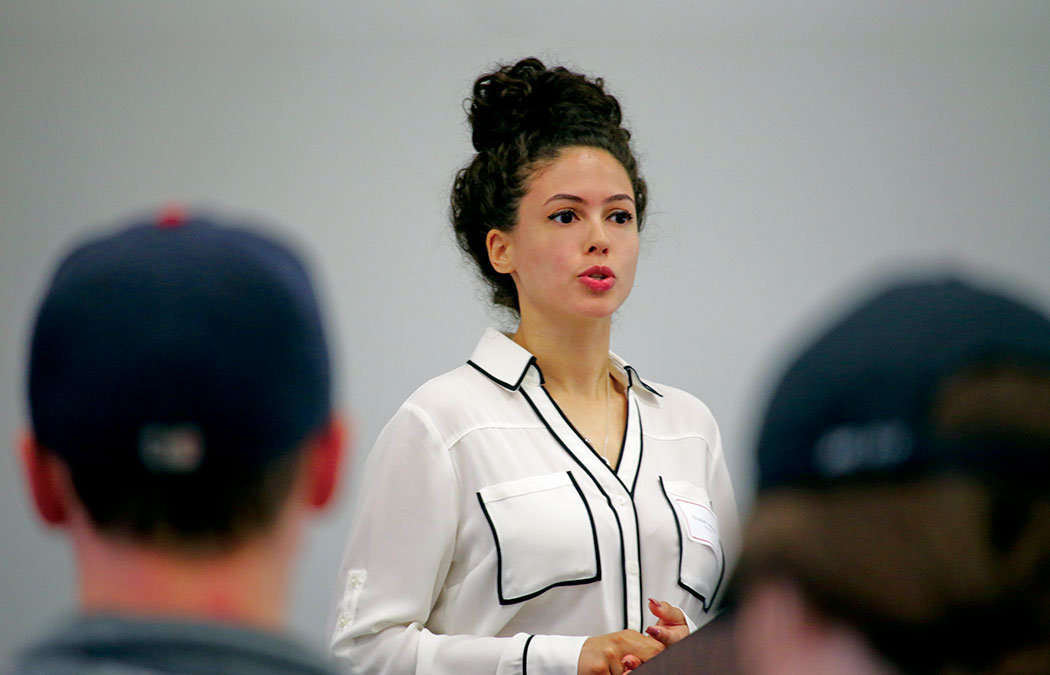
Establishing groundbreaking business pathways
Soon potential business and technology students at Saint Mary’s will be able to design new pathways to graduate degrees, take advantage of new opportunities for career advancement, and be able to build their own customized educational experiences.
Saint Mary’s School of Business and Technology is thinking outside of the box with a new customizable and stackable series of graduate certificates — called Saint Mary’s Accelerators.
In 2019, Saint Mary’s MBA program was recognized as the third largest in the state, and Saint Mary’s will leverage this reputation and its longstanding history of innovation with an increased focus on business education opportunities for graduate students. In alignment with Strategic Initiative #3: Pilot a Pathways Concept in Business, the School of Business and Technology plans to develop a “stackable” series of graduate certificates, allowing students to customize pathways to their degree. Future phases of this work will involve exploring accelerated completion pathways (certificates stacking together to form a full program), non- degree professional education and boot camps, and undergraduate certificates.
In her efforts to strengthen, innovate, and differentiate the School of Business and Technology, Dean Michelle Wieser, Ph.D., is moving to make Saint Mary’s a destination school in this area.
In phase one of this initiative, 10 graduate certificates will launch in fall 2020.
The first 10 certificates are created out of courses currently offered in existing programs and are only online. New certificate programs and certificates to be offered in the university’s blended (online and on ground) programs will be explored in subsequent phases.
These certificates can stand alone or build into a full degree, stack onto a different type of degree, or serve as a specialization to the accelerated MBA (AMBA). Eventually they will also be designed to stack to other certificates to form a self-designed master’s degree, following a similar approach to the university’s current M.A. in Integrated Studies program.
According to Wieser, this approach to graduate education puts the student in the driver’s seat.
“Students have the chance to change or accelerate their careers by acquiring knowledge in a more specialized and condensed format,” she said.
“As they complete a certificate, they can then decide if they would like to pursue an additional certificate or a full master’s degree program — immediately or down the road.
“When a person is committing to go back to school, it can sometimes be daunting to consider a significant time and financial commitment,” she added. “By pursuing a graduate certificate, students can gain immediate marketable skills with a much lower commitment of resources.
And, they can receive credit for the full certificate when pursuing an accelerated MBA or another one of our specialized master’s programs.”
The value of this stackable strategy is that students can customize an educational plan that meets their specific needs. For example, a student could take a certificate in project management, advance his or her career in the field, and then decide to apply the certificate toward the full master’s degree in project management. Another student may complete a certificate in a particular discipline and then stack it onto a full program in a different discipline. For example, if a person is a project manager for a nonprofit organization, he or she may choose to take the certificate in nonprofit management and then later stack it into the M.S. in Project Management degree, allowing him or her to create a path that fits his or her unique career.
NEW GRADUATE CERTIFICATES IN THE SCHOOL OF BUSINESS AND TECHNOLOGY APPROVED TO BEGIN IN FALL 2020
• BUSINESS ANALYTICS
• HEALTHCARE ANALYTICS
• ARTIFICIAL INTELLIGENCE
• NON-PROFIT MANAGEMENT
• INTERNATIONAL DEVELOPMENT
• HEALTHCARE ADMINISTRATION
• FINANCE
• PROJECT MANAGEMENT
• HUMAN RESOURCE MANAGEMENT
• DATA ENGINEERING (BLENDED)
• INNOVATION AND ENTREPRENEURSHIP (BLENDED IN ROCHESTER AND LAUNCHING SPRING OF 2021)
Libraries and Writing Centers: Fall 2020 update
During fall semester, Saint Mary’s Libraries and Writing Centers will offer robust virtual services to better support student and faculty needs. Students can consult with a librarian via phone, chat, email, and Zoom appointments. Writing Center consultants and peer tutors will be available for appointments via Zoom and email. Students can contact the Writing Centers via email or telephone with brief writing questions. The Writing Centers’ appointment calendar and online resources will be available at our new, unified Writing Centers website, which launched Aug. 17.
Libraries and Writing Centers will not offer face-to-face consultations or library instruction due to COVID-19 social distancing constraints.
Winona Campus library
The Winona Campus library will be open. All library space has been reconfigured to allow for social distancing. As required on the entire Saint Mary’s campus, masks must be worn in all library common spaces. Physical items will be available for check out, with a self checkout system set up at the front circulation desk to avoid contact. Faculty, staff, and students will also be able to place holds on books and pick them up at the circulation desk. Library staff will be at the front desk to assist as needed. Read all Winona Campus library updates.
Twin Cities Campus library
Given space limitations, the Twin Cities Campus library facilities will remain physically closed. While the space will be closed, faculty, staff, and students can still access physical materials by requesting them in SuperSearch, and the librarians will mail them to your home. To learn more, read Twin Cities Campus library updates.
Perspectives on the new normal: Post COVID-19
Research papers written by graduate students in the Master of Business Administration (MBA) and Master of Arts in Public Administration (MAPA) this past summer semester have been compiled into an anthology, titled “Perspectives on the New Normal: Post COVID-19.”
Students in courses MBA 643: Corporate Finance and MAPA 620: Managing Public Finances are normally required to write a semester-long research paper on a topic of their choosing. This semester, they were asked to focus on the long-term impact of the COVID-19 pandemic on their industries and profession and attempt to discern what may become the new normal for their world. The best 20 of these 38 papers were compiled and edited into the anthology.
Two students awarded scholarships from MinneAnalytics
Business intelligence and data analytics majors Jessica Patton of Lyndon Station, Wis., and Kara Rudek of Inver Grove Heights, Minn., have each been awarded a $1,000 MinneAnalytics Scholarship.
MinneAnalytics Scholarships are awarded to students who display a passion for pursuing a career in analytics and an ongoing commitment to community engagement. Last year, the organization awarded 21 scholarships, including two from Saint Mary’s, in the amount of $1,000 each to students from schools across the Midwest.

Jessica Patton
Patton, who is a senior also majoring in finance and management, works four part-time jobs while in school. Despite her rigorous schedule, she still finds time to give back to the Winona community. As a member of the women’s hockey team, she volunteers at the local animal shelter, works sporting events in the Twin Cities, and coaches hockey practice for local youth teams. Patton is also a member of the Habitat for Humanity Club, Student Senate, and Volunteer Mentors.
After graduation, she plans to pursue a master’s degree in servant leadership. Although she has always had an interest in data entry, analytics, and the programs used for these, Patton said giving back to others gives her a sense of self-satisfaction and a commitment to something greater.
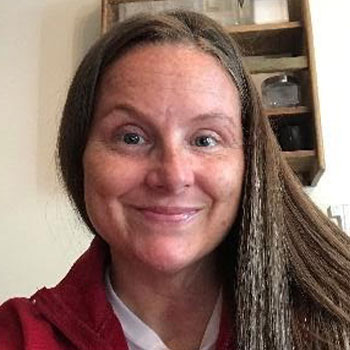
Kara Rudek
Rudek, who is a bachelor’s completion student also holding an associate’s degree in human resources, hopes to use her degrees to create efficiencies and improve lives. During the COVID-19 shelter-in-place order, she spent most of her time guiding her two children through the remaining school year while completing her own coursework at Saint Mary’s, studying for the PHR exam, making masks for the community, and becoming a Master Recycler and Composter for Dakota County. As a county representative, Rudek hopes to educate and inspire others to reduce waste and make the community better.
MinneAnalytics is a nonprofit organization serving the data science and emerging technology community in Minnesota, the Upper Midwest, and beyond by providing accessible, authentic, and engaging events. For more information about the scholarships, go to minneanalytics.org/scholarships.
McCallum-Ferguson and Tadie publish article on makerspace and ethics
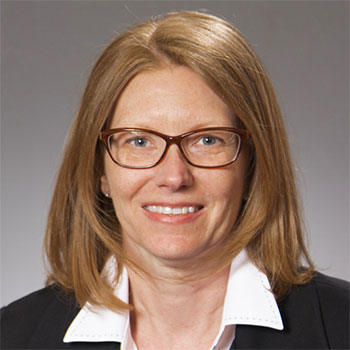
Shelly McCallum-Ferguson
Shelly McCallum-Ferguson, DBA, professor of business, and Joseph Tadie, Ph.D., associate professor of philosophy, published a paper titled “Learning business ethics through making: Integrating a makerspace approach in business ethics instruction.” The paper will appear in the Journal of Leadership, Accountability and Ethics (ISSN# 1913-8059) in volume 17 (5), 2020.
This paper presents the progress made over the last few years to introduce a makerspace module into an existing business ethics course. This integration was undertaken as a means of addressing some of the many challenges ethics teachers face. The paper explores an approach to course design which engages students with ethical principles in the first half of the course in a standard theoretical approach. In the second half of the course, a business-like, project-based setting emerges where ethical dilemmas arise spontaneously, thus providing opportunities to reflectively identify, consider, and make decisions from the ethical theories studied.

Joseph Tadie
Designed, in part, to identify and express ongoing work that squarely meets our strategic plan, the paper attests neatly to a response to both strategic plan initiative 1’s call to develop values-based assessment efforts and initiative 3’s call to further develop a makerspace to support innovation.
The paper was also the basis of a presentation accepted at the 2020 MBAA International Conference, March 25–27, 2020 in Chicago, Ill., but was canceled due to the pandemic (rescheduled for presentation at the 2021 conference).

Celebrating 20 years of women’s hockey
It was like a “Mighty Ducks” remake.
Saint Mary’s first Cardinal women’s hockey team in 1998-99 wasn’t exactly composed of first-string recruits. “We were a mishmash of girls — ranging from a few who had played hockey their entire lives to girls like myself who had been around hockey all my life and knew how to skate, but hadn’t played,” said Carey (Stover) Benson ’99.
“We had two figure skaters who we recruited to play hockey instead. And there were even two girls who had never really skated before, but were determined to figure it out.”
About the only thing they shared? The desire to play hockey.
Benson was there for the birth of women’s hockey at Saint Mary’s, even before it became a varsity sport. It started when she was a first-year student, recruited to play some pick-up hockey games by Jess Bauer ’99.
By the end of that year, these women formed a club, one of the men’s hockey players served as 46 their coach, and they traveled to other schools via carpool. Bauer drove the Zamboni and cleared the ice for them, and junior varsity men’s players would referee their games.
“It was very ‘Mighty Duck’ish,” Benson said. Fittingly, someone on the team had heard about Mighty Duck Grants, matching grants awarded annually by the Minnesota Legislature in support of ice sports in the state. With the help of Tony Piscitiello, AFSC ’69, M’82, and Ken Pelligrini ’72 from the Saint Mary’s Admission Office, and then athletic director Don Olson, dreams of a varsity women’s hockey team began to take shape.
“By our junior year, we knew we were going to go varsity,” Benson said. “Tony Piscitiello began recruiting girls who played hockey. And by that summer we knew a coach was coming, we just didn’t know who it was.”
That coach turned out to be Jeff Vizenor, who came to Saint Mary’s in his late 20s not fully knowing what to expect, but excited for the opportunity. “The thing that was amazing about our team was that our motto was, ‘Work hard and have fun,’ and that’s just what we did, Vizenor said. “You couldn’t have asked for a group of young women who worked harder than they did. They worked like crazy and just loved it. We really pulled together as a team.”
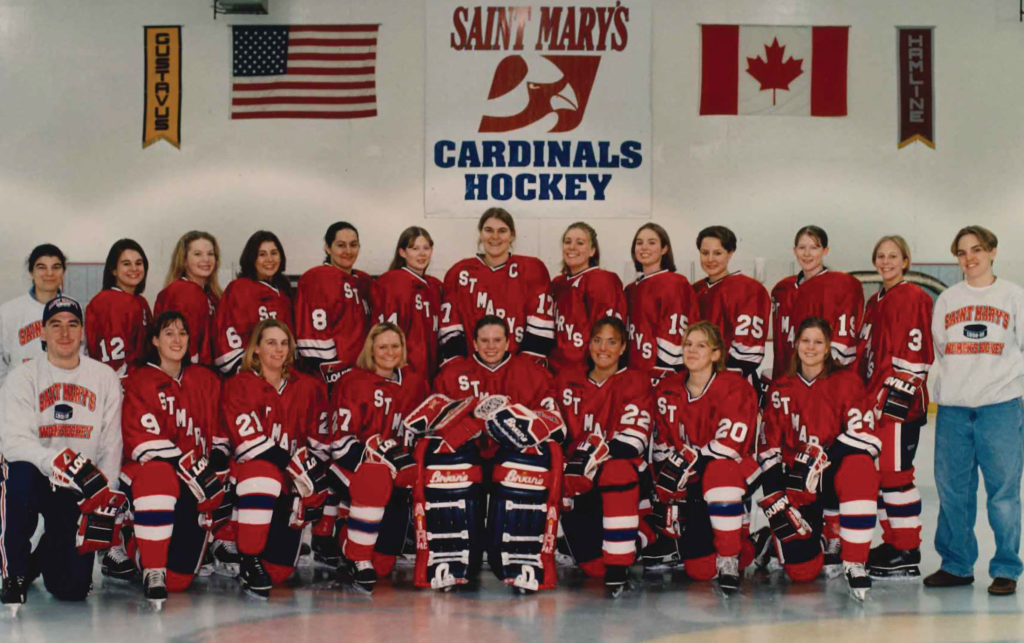
The first Cardinal women’s hockey team in 1998-99
Vizenor coached for two years at Saint Mary’s, and both years Cardinal women’s hockey captured conference titles.
Benson said more than 20 years later she still has a sense of pride in being on that team. “Being on that team gave me a connection to Saint Mary’s that otherwise I wouldn’t have had,” she said.
“I’m from Wyoming, and have zero connection to Minnesota. The people I’m closest to are my teammates. For me, hockey was the glue that brought Saint Mary’s into my life and kept it here. Some of the best memories I have are from being on that team.
“I’ve been competitive my whole life. We started a team of mishmash players and grew it from the ground up. We were MIAC champions. We were a really good team of misfits. That’s carried me far in life. I’ve been able to say, ‘I can always figure it out. I did that at Saint Mary’s playing hockey.’ ”
Benson went to grad school for sports psychology and worked for a reputable sports agency in Florida for seven years. To get closer to home, she moved to Colorado and worked in the athletics department at the University of Denver before changing careers and becoming a corporate recruiter for finance professionals. She went on to earn both an MBA and a Master’s of Education in Counseling.
Vizenor went on to coach for the University of Wisconsin and Minnesota State University-Mankato and is currently a high school principal, but he continues to referee hockey in the Twin Cities metro area. Like Benson, his time at Saint Mary’s holds a special place in his heart.
He and about 10 alumni-athletes from that first women’s team returned to campus this past fall for the 50 years of women reunion. Benson organized the reunion on Facebook and said returning to campus was like stepping back in time.
“It was like we were back 20 years ago, sharing stories and laughing,” Vizenor said. “This is a highly successful group of women who have learned lessons from being a hockey player and a Saint Mary’s graduate. Two players from those first years are in the Sports Hall of Fame.”
Benson said she’ll always support women’s hockey. “When you look at sports like football or baseball where physical strength and physical size come so much into play, it’s hard for girls to feel they can compete at the same level as guys. In hockey, girls really can compete successfully. It’s a sport where boys don’t look at you as a girl but a teammate. You’re not a girl, you’re a hockey player. It’s an equalizer.”
Vizenor said the skills you learn in hockey are life-long skills. “There’s something special about being a hockey player,” he said. “Hockey players and hockey people are special people in a very unique family.
“And Saint Mary’s is a special place,” he added. “It’s crazy to think that those two years could have such a big impact on my life.”
Photo caption: Alumnae of the first Cardinal women’s hockey team returned to campus last fall.
Updates on fall 2020 planning
Cardinals,
This week we welcomed the first of our students back to campus … students who moved into the Alverna Center for their 14-day quarantine. We are checking in with the students multiple times a day, and they have access to hot meals through food service. We are excited to have students back and are preparing for resident assistants and peer ministers to arrive soon.
As of Aug. 1, the name of Student Affairs and Student Life has officially changed to Student Affairs. My own title, office names, and areas where the office is noted have all been updated.
On Friday, Aug. 7, the Winona Campus will welcome Cynthia Kenyon from the Minnesota Department of Health. Kenyon will be visiting various spaces on campus, including, but not limited to, residence halls, dining services, and classroom spaces to assist the university with its continuing work related to the return of all students to campus.
Student Senate will continue to meet virtually starting in September. Your student senate president, Kendall Archer, her executive board, and senators are here to assist you and work with the administration of the university to get through these challenging times.
I would like each of you to reflect on the concept of creating familial units or COVID pods. This practice is intended as a way to manage the inevitable. Certain groups of students are naturally going to spend a lot of time together, and we encourage this interaction, as it is healthy and appropriate. When students are on campus, they develop their own campus family. The goal of these familial units is to honor what students do naturally and let them know that they can and should eat together, spend time together, and do things together, viewing it similarly to how they are spending time at home with their own families now.
This is something to think about and will be encouraged as it might be a way to enjoy the college experience while socially distancing and following COVID-19 guidelines.
Keep this information handy in case you have questions related to COVID-19 planning:
- 507-457-1614
- covid@smumn.edu
- smumn.edu/covidplanning
Visit these sections on smumn.edu/covidplanning for more updates:
- Commuter students
- Fitzgerald Library and McEnery Center (under Academics)
- Gostomski Fieldhouse
- Motor pool and club/organization guidance (under Residence Life and Student Activities)
- Performance arts (under Academics)
- R.I.S.E. and competitive sports (under Residence Life and Student Activities)
- Residence hall lounges (under Residence Life and Student Activities)
- Safe ride bus (under Residence Life and Student Activities)
- Saint Thomas More Chapel (under Campus Ministry)
- Student Success and First Generation Initiative (under Academics)
- Wellness Center
- Work-study
Stay safe and remember, together, we are Saint Mary’s.

Tim Gossen, Ed.D.
Vice President for Student Affairs
Answers to your questions
Why is Saint Mary’s confident that a 14-day quarantine at home before classes begin is a good idea, when a large percentage of cases are contracted in the home?
The density that transmits the virus is when people are crammed together in factories or frontline service work in close physical proximity to one another or the public. Unless a home is filled with a large family, many of whom are active outside the home, it is typically the safest place for someone to quarantine.
Will there be exceptions to the mask mandate for students who have medical conditions that do not allow for the wearing of a mask?
If someone has a medical condition and wearing a mask is not feasible, they should contact the Wellness Center at 507-457-1492 or wellnesscenter@smumn.edu. If appropriate, the student should fill out the accommodation form for academics.
What are the regulations of going on and off campus? How can students enjoy what Winona has to offer while still being safe?
We realize that we cannot keep students on campus all fall. Students will need to work, run errands and — yes, we are encouraging students to take advantage of the natural outdoor beauty of this area. We are asking students to stay on campus as much as possible, but when they must leave campus, they should interact responsibly (wash hands frequently, use hand sanitizer, maintain social distance, and wear a mask). If students travel out of the state or outside of the region, they should complete the travel notification form to help with contact tracing.
If one of our roommates gets sick, will we be asked to quarantine too?
If a student is symptomatic, they should be tested at the Wellness Center or Winona Health. The student will be asked to quarantine until the test comes back. Students may quarantine on campus (in the Alverna Center) or at home. We encourage them to go home if possible. If the roommate chooses to quarantine at home, the other roommates can continue living as usual. If the roommate test comes back positive, they are encouraged to go home or to quarantine at Alverna. The Minnesota Department of Health will use contact tracing to let anyone who was in close contact know whether or not they should also quarantine. You should always be watching for COVID-19 related symptoms.
Will dance classes still be held?
All students in dance classes will wear masks, and all classes have been adapted to observe social distancing. All dancers will wear footwear of some type; bare feet will not be allowed. This applies to all classes taught both on the main campus and at Minnesota Conservatory for the Arts. The occupancy rates have been reduced for social distancing. Some classes may also be moved to outdoor locations.
How will intramurals work? Will outdoor competitions like flag football and sand volleyball be allowed?
We are reviewing the slate of offerings for competitive sports and adhering to appropriate guidelines. We will announce our decision within the next few weeks.
How will the mail room be different?
There will be no difference for students. Parcel lockers will continue to be used; please remember to bring your student ID. Mail delivery to offices will remain discontinued in fall, so offices will need to pick up their mail.
If I were to leave campus to attend a wedding in the Twin Cities area, will I be required to quarantine when returning to the Winona Campus?
We strongly recommend students remain on campus as much as possible. The requirement to quarantine would be based on the event itself. Our expectation is if people travel off campus to attend an event, they practice social distancing and wear a mask. You would also be asked to fill out the travel notification form.
Will clubs still have their full budget that the senate approved for the 2020-21 academic year? If not, how will club budgets be changed this semester?
Student Senate is taking this under consideration and will be communicating with clubs.
In regards to the 27 courses that have already moved to online delivery … are there additional faculty members who are waiting for approval to teach remotely?
No additional faculty are waiting for approval. Classroom capacity will determine any additional courses that will move online, however, facilities and the registrar are actively working to ensure appropriate spaces for classes which will be completed shortly.
How will labs work, particularly if we have to go home and shift to online learning?
All faculty have been encouraged to “front load” their classes, which means prioritizing content that needs to be done in person during the first half of the semester. That way if we do have to go remote, most of the necessary face-to-face work, such as labs, will be complete.
What will the library look like and will McEnery be used?
The library will be open during usual hours, with a few adjustments for weekend hours. The entire building will be available for use. All library space has been reconfigured to allow for social distancing. Items will be available for check out, a self-checkout system has been set up at the front circulation desk to avoid contact. (Library staff will still be behind the desk to assist as needed.) Students can consult with a librarian via phone, chat, email, and Zoom appointments. Interlibrary loans will be available, but services are delayed, due to differences in library reopenings throughout the state. Study rooms will be available, but students will need to reserve all study rooms through the library webpage reservations system. Students will pick up a key to open the study room at the circulation desk and will need to leave their ID at the desk until they return the key. There will be disinfecting materials available for students to use prior to their use of any study space in the library. As required throughout campus, masks must be worn in all library common spaces.
Have an additional question or concern? Fill out the form and let us know.
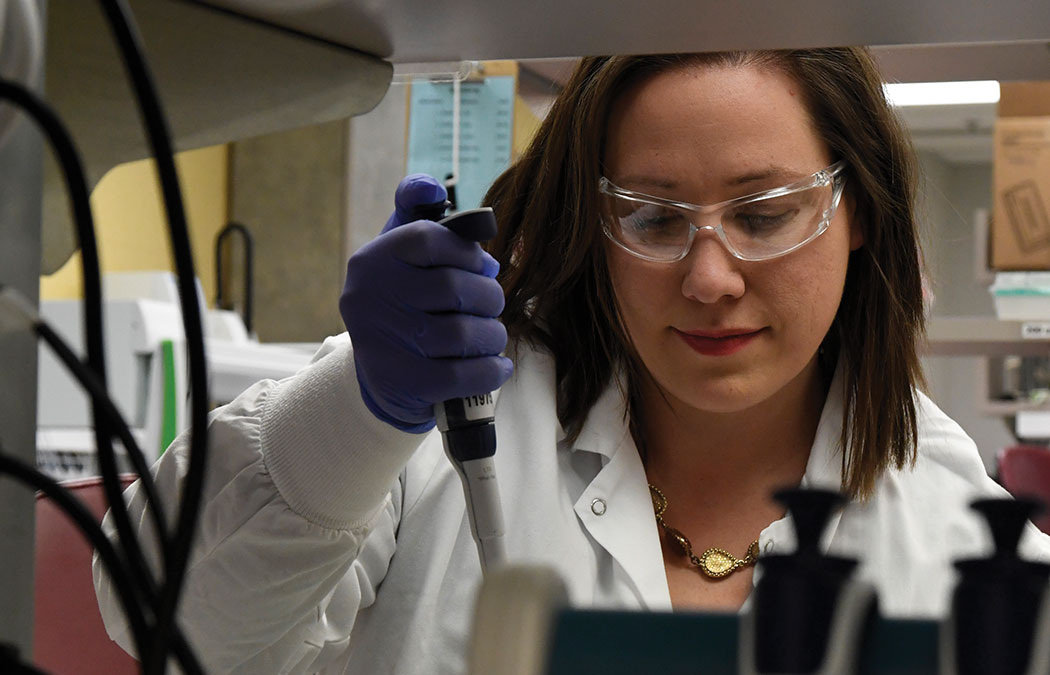
Pitel solves complex puzzles in genetic research at Mayo Clinic
Working in genetic research at Mayo Clinic, Beth (Schubert) Pitel ’06 solves complex puzzles, which could ultimately improve patient care or even save lives.
Pitel became part of a research team using genetic testing to understand why young children were suddenly dying about 15 years ago in an Amish community. The deaths had baffled medical examiners and brought heartbreak to the Amish community. Some of her most recent research was covered by CNN.
It was eventually uncovered that a gene called RYR2 was to blame. The children who died were found to have inherited a duplication of part of this gene from both parents. The results provided some closure to family members, recourse for children currently carrying the gene, and options for preventative measures through genetic counseling.
Pitel describes her job as threefold:
Genomic assay development. “When you go to the doctor and they do genetic testing, they are ordering a clinical test,” she explained. “I’m one of those people who help to develop molecular genetic testing methods. I make sure they are of the highest quality and have an acceptable turnaround time for the patient.”
Genomic annotations in cancer. “I am lead development technologist on a team called the ‘Genomics of Oncology Annotation Team’ (GOAT). We create tools that support the assays we develop. Those tools can help us determine what alterations might be important for the doctor or patient to know about,” she said. “Can we align abnormalities in the genome with pieces of knowledge? What do we know about the deletion of a certain gene in a particular type of cancer? We can make assertions based on peer review journals, genomic knowledge bases, or our own clinical experience in the lab. We have a lot of resources at our fingertips, so I’m really grateful to be involved in gathering that data and putting it in a format that is useful for those trying to interpret these complex genomic assays.” Pitel also co-leads a virtual molecular tumor board for the Variant Interpretation for Cancer Consortium (VICC), an international collaborative effort to better utilize what is known about mutations in cancer.
Clinical Research. “In the case of Dr. (Michael) Ackerman’s study (with the Amish children), we helped to interpret the data from chromosomal microarray and mate pair sequencing (MPseq) studies and deliver results back to the team. We get pulled into research studies a lot because we are able to provide access to the technology needed to answer complex problems and the interpretation on the back end.”
Pitel said that her job is very diverse and fulfilling. “It’s a great use of my education,” she said. “I think critically about what I’m doing and troubleshoot different problems that arise. Working through a difficult case is the ideal way to use my education, which was ignited at Saint Mary’s.”
Pitel said she was always drawn to science, and genetics in particular.
“I felt like being in a lab and working with technology would be a really good fit for me,” she said. She eagerly became the university’s first cytogenetic technology major, which was a 4 + 1 program with Mayo Clinic. “I jumped on that opportunity and didn’t look back,” she said.
“I knew that’s what I wanted to do. I knew I wanted to come to Mayo Clinic, and it all seems to have worked out.”
Pitel went on to earn a master’s in biochemistry and molecular biology and has worked at Mayo Clinic for more than 12 years in a variety of roles, all within the same lab. Her current title is development technologist.
Although the cytogenetic technology major was phased out, several university alumni, in this program and others, have gone on to work at Mayo Clinic. Debra Martin, Ph.D., department chair of Biology, estimates that at least 10% of those working in the lab with Pitel are Saint Mary’s alumni.
“That wouldn’t surprise me; there are a lot of Saint Mary’s alumni here,” Pitel said, adding that she enjoys seeing Dr. Martin bring current students through the lab for annual tours. Dr. Martin is one of the people she credits most for preparing her for her career.
“Dr. Martin prides herself on being a tough teacher,” Pitel said. “But she ingrained a lot of biochemistry and molecular biology in my mind. I felt prepared. And I worked with Dr. Dick Kowles (now faculty emeritus) on my research project. Working with him was just a joy, and he always had a new joke or quip. I could be in a lab for hours counting cells under a microscope, but he would make me feel grateful that I was there.
And Dr. Jeanne Minnerath made a huge impact on my career trajectory; she brought me to Mayo Clinic on multiple occasions to tour labs and lab programs.”
Pitel also believes that being part of Habitat for Humanity, playing on the volleyball team, singing in the church choir, serving as a resident assistant, and other campus activities while at Saint Mary’s taught her how to balance her time and juggle priorities, which has come in handy in her career and with her family.
“I don’t think I would have been able to take advantage of being so involved had I been at a larger university,” she said. “Saint Marys taught me to make time for the things that are important.”
